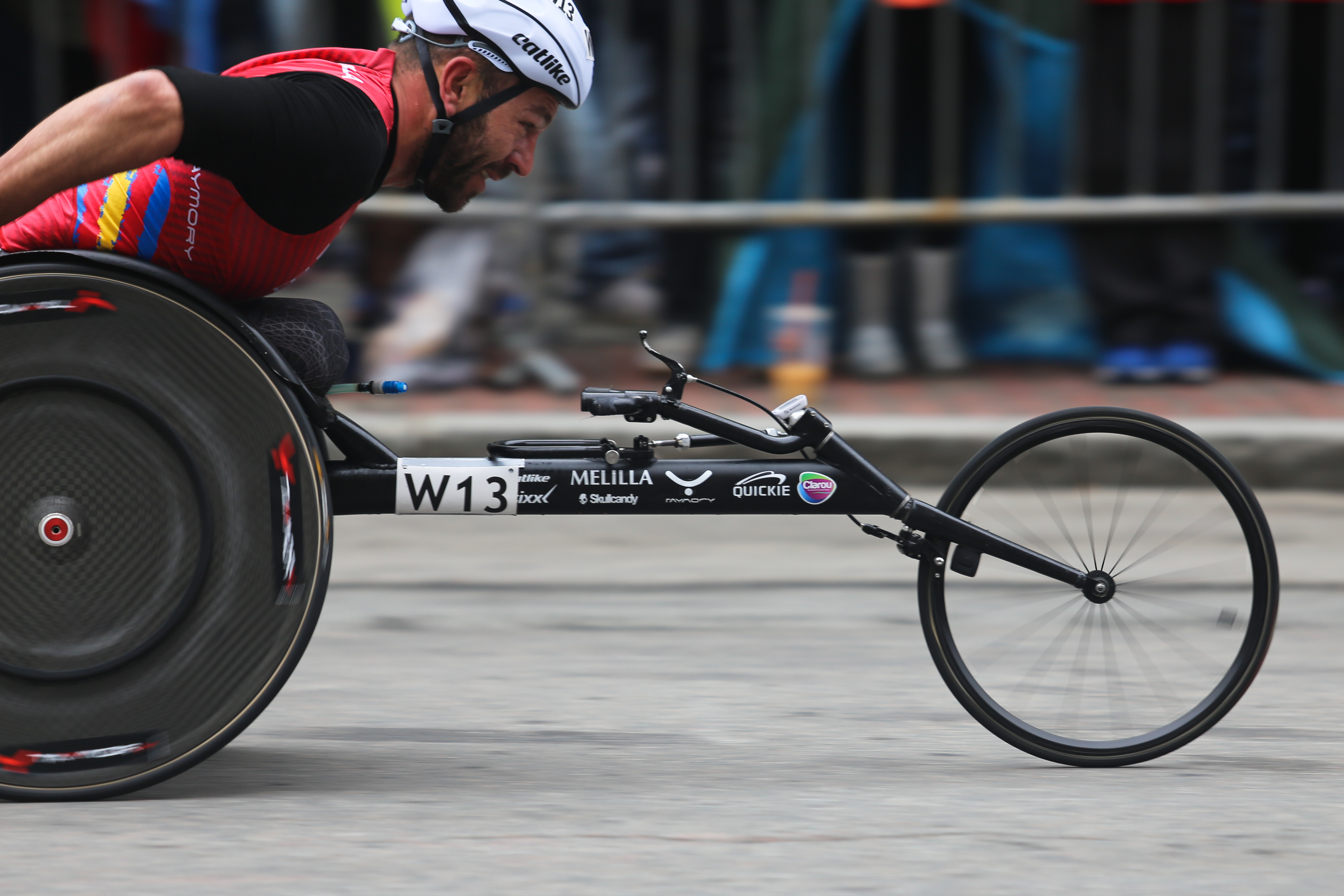(Photo by Xuedong Wang/ BU News Service)
By Jon Sigal, James Mattone and Juan Esqueda
The Boston Marathon is a storied event. The city watches on the third Monday of April as runners from around the world compete for 26.2 miles. But, some of them don’t run.
As it turns out, eight different events will take place on April 18. Men and women will gut it out in their respective “open” and “masters” events, and framing them will be a conglomeration of three-wheeled speed demons. That’s right – the wheelchair event is as much a part of the Boston Marathon as fans gathering around Boylston Street and Copley Square to cheer on the race.
To get a sense of how integral this portion of the race is, the timeline below highlights some milestones. Now in its fifth decade, the Boston Marathon’s wheelchair competition has no shortage of elite athletes.
Similar to how the running events attract people ranging from the Eritrean-born Meb Keflezighi to the Kenyan-born Robert Kipkoech Cheruiyot, male competitors from around the world convene for the wheelchair event.
Eighteen men from seven different nations have emerged victorious, and the below map gives a sense of just how far-reaching the event is.
Male Winners by Nationality
The same phenomenon holds true for the women’s portion of the wheelchair race, as 16 different women from six countries have emerged victorious. Some notable competitors include the Japanese-born Wakako Tsuchida and Swiss-born Edith Hunkeler.
While less geographically diverse, the below map illustrates how truly global the female event is.
Female Winners Nationality
It has became increasingly difficult to win the wheelchair event over time. Wheelchair technology has improved, competitors have mastered the course and they’ve also become better conditioned.
The below graph depicts this, as the first male winner took nearly two hours and the most recent winner clocked in at roughly an hour-and-a-half.
The same trend can be observed in the female portion of the race. The first winner took nearly four hours to complete the 26.2 mile course, while the most recent winner accomplished the same feat in just under two hours.
Another intriguing way to analyze the men’s and women’s races over time is a side-by-side comparison. The spikes and dips follow the same patterns, and trends link up with the elite race as well. For example, in 2011 when Geoffrey Mutai had the “fastest marathon” run ever, the men’s and women’s wheelchair records were also broken.
The wheelchair’s 2016 version will commence at 9:17 a.m. on April 18 with 35 male participants, while the female counterpart kicks off at 9:19 a.m. with 15 participants.
To get a sense of the journey these 50 athletes will embark upon, check out the map below.
